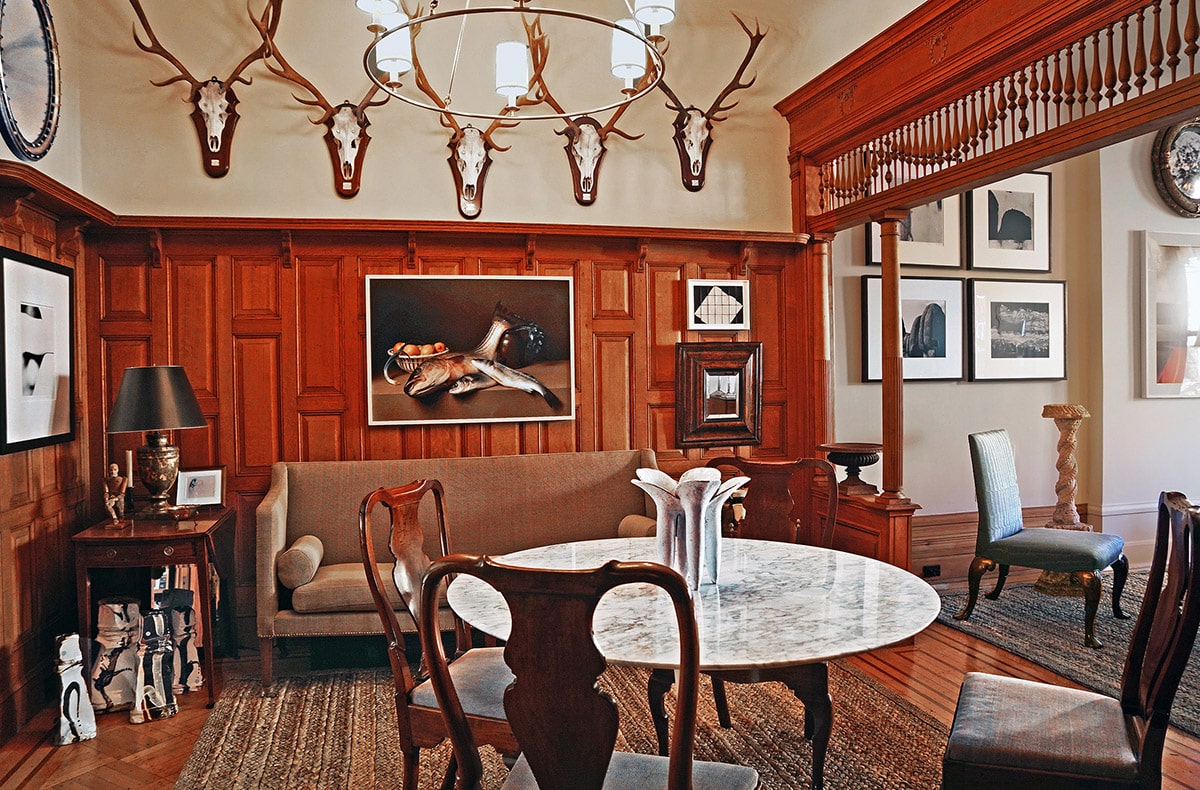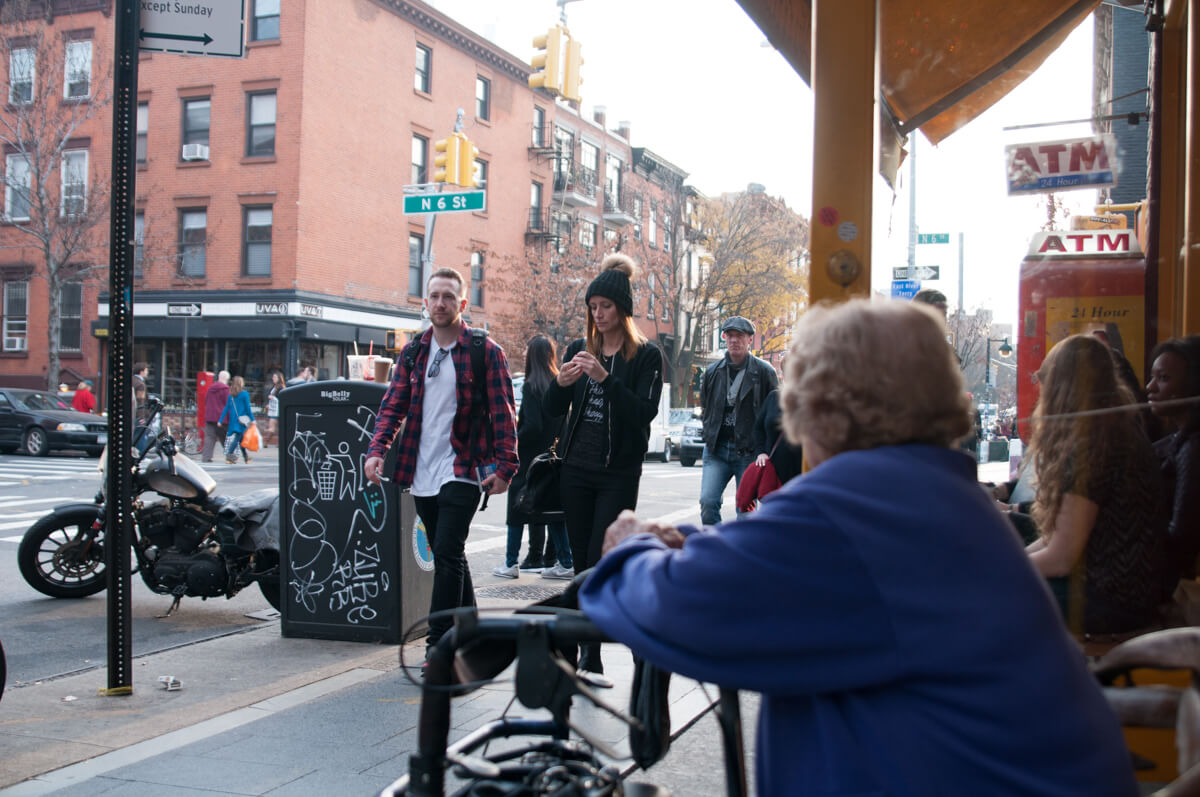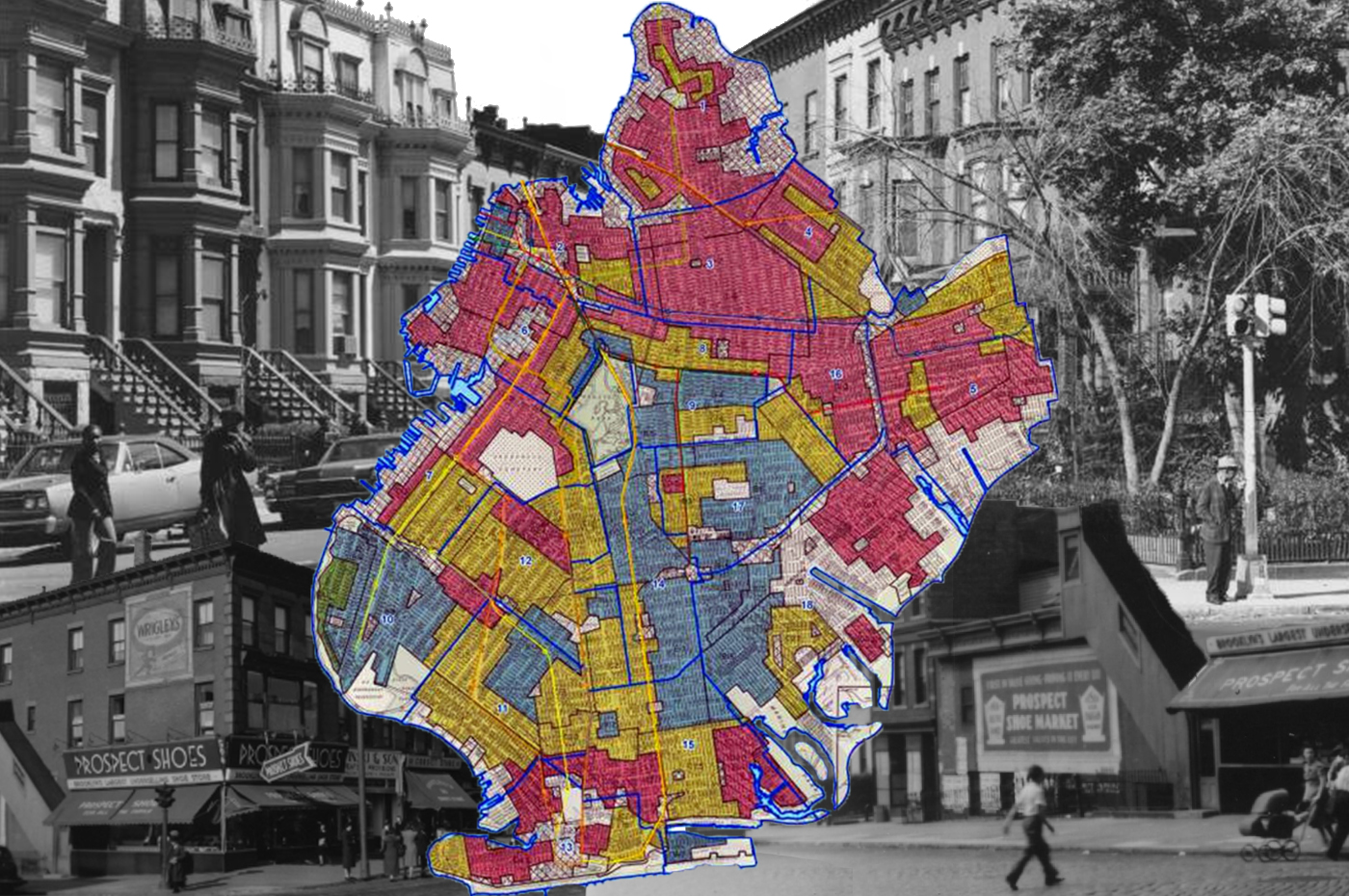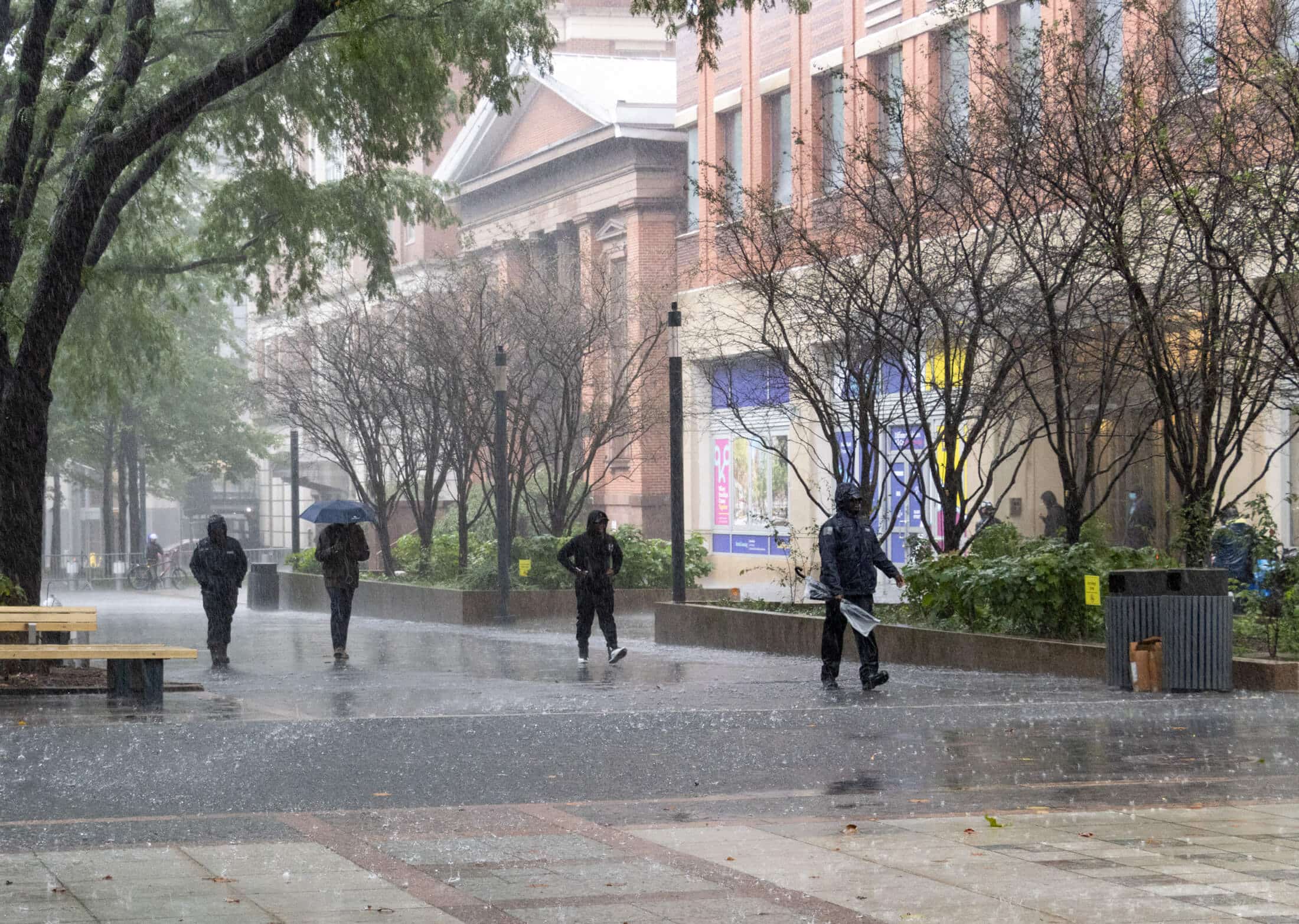Walkabout: Lane Bryant and the Riches of Expectation, Part 2
Read Part 1, Part 3, and Part 4 of this story. In 1909, dressmaker Lena Bryant was working out of a shop on 5th Avenue and 120th Street in Harlem. There, under the Lane Bryant label, she designed and manufactured maternity clothing for stylish women -– some of the first mass produced lines of maternity…


Read Part 1, Part 3, and Part 4 of this story.
In 1909, dressmaker Lena Bryant was working out of a shop on 5th Avenue and 120th Street in Harlem. There, under the Lane Bryant label, she designed and manufactured maternity clothing for stylish women -– some of the first mass produced lines of maternity wear in the world.
Before Lane Bryant, women who wanted to venture out while pregnant had few clothing choices. They had to either have clothing custom made to accommodate their growing bodies, sew them themselves, or wear oversized baggy clothing that would help them hide their pregnancies.
For most of the Victorian era, nonworking, well-to-do women simply stayed home and received their female guests. No self-respecting woman of that age would walk the streets in the advanced stages of pregnancy.
It just wasn’t done. The women who discovered Lane Bryant and her clothing were able to take advantage of her design genius, and Lane Bryant became the head of one of the most successful fashion houses in America.
Lena Bryant’s story up until the 1920s was told in Part One of this story. She soon outgrew her small shop, and had the capital to build her own garment center loft building at 25 West 38th Street, just west of 5th Avenue.
From this nine story building, the company had a store/showroom on the first two floors, and offices and manufacturing above.
In addition to the retail shop, Lane Bryant also had a very successful mail order business, making the label the most successful maternity company in the world, with over a million dollars in sales in 1917.
She manufactured all kinds of maternity clothing; day and evening dresses, lingerie and underwear, corsets, coats and outerwear, sportswear and even fur coats. A pregnant woman could find everything she needed at Lane Bryant.
Two years after building 25 West 38th Street, it was too small. The company needed more room, and moved into the building next door at 21-23 West 38th St., a much wider and larger 18 story building, in which Lane Bryant would occupy 12 floors.
This building was just around the corner from Lord & Taylor, and was in the center of Manhattan’s new shopping district, with Lord & Taylor, B. Altman’s, and other fine large department and specialty stores in the immediate area. Lane Bryant’s splendid new store fit right in. It opened in March of 1917.
Lena Bryant’s second husband, Albert Malsin, was her behind-the-scenes genius. He was the planner and strategist, and he was really good at it.
He was also an engineer by training, and over the course of the next few years, was a factory innovator, as well. He devised several new methods for cutting large numbers of garments at once, and developed several new methods of garment construction. Many of his innovations became garment center standards.
Lena knew women. She had the maternity market well in hand, and was now expanding the business to the next underserved market – large and tall women and girls.
No one was making clothing for these women, as like now, fashion was only concerned with the idealized thinner figure of the day.
But in spite of fashion’s dictates, there were a lot of larger women. Many of them were well off, and wanted fashionable clothing. They also wanted the upscale shopping experience, and Lane Bryant gave them exactly what they wanted and needed. She also understood sizing and body types, something most clothing manufacturers have since forgotten.
Grading a design up to a large size means more than just adding inches to the sides. Larger women are proportioned differently. There are different body types within larger sizes. The proportions of a shorter large woman are different than a taller one.
Some people are top heavy; others have all their weight in their hips. Some are curvy, others straight up and down, with little waist definition. Girls, who have not yet grown mature bodies, have their own sizing differences and issues.
And then there were tall women, with yet again different sizing demands. Lane Bryant had a category, a size, and clothing for all of them.
By the late teens, the Manhattan store was running ads in all of the Brooklyn papers. Albert Malsin and his development team were busy expanding the brand, and were working on opening branches in seven new locations.
Brooklyn was first on the list. Downtown Brooklyn’s very popular and successful shopping district was located along Fulton Street, between Flatbush and Court. In addition to stores, busy theaters, restaurants and public venues were scattered along Fulton and the streets behind it on both sides. Livingston Street had many shops and theaters, and was almost as busy as Fulton Street.
Lane Bryant Co. bought a plot of land that faced on both Livingston Street and Hanover Place, a one block side street between Fulton and Livingston Streets, only a block from Flatbush Avenue and Nevins Street.
They had a three story, plus basement store building constructed, with the main entrance on Hanover Place, and a secondary entrance on Livingston Street.
The store building was made of reinforced concrete, and had banks of large display windows stretching across the street facing sides of all three floors. It was large enough to take up half the block.
The store carried both the maternity lines and the plus sized lines. As with maternity, Lane Bryant offered large sizes in everything – day and evening, casual and work, coats and outerwear, well as undergarments, stockings and lingerie.
The store also carried an exclusive line of shoes, hats and jewelry specially sized and proportioned for larger ladies. And on top of that, Lane Bryant also had a beauty salon on the promises. It was a one-stop shopping paradise. The new Brooklyn store opened with great fanfare on October 9, 1922.
Lane Bryant was very successful in business, but not immune from tragedy. Her second husband, Albert, soon joined her first husband, David Bryant, in death. He died suddenly in 1923, leaving her with four children and an enormous company. Her oldest son Raphael joined the company after college, and eventually became president.
Interestingly enough, even though Lane Bryant catered to large and pregnant women, their print advertising did not reflect those sizes in their fashion illustrations or choice of models.
Their illustrations depicted pregnant women who looked about two months pregnant, and their “stout” women were as thin, if not thinner, than the women who were drawn for mainstream fashion.
When they started using real models in the 1940s and 50s, they were certainly not “stout” in anyone’s definition of the word. The same is true for their children and young girl’s lines. One particular illustration for a girdle, printed in 1945, shows a model as thin as can be, with a notation that sizes 38 to 54 could look “well-groomed.”
It was also interesting to note that Lane Bryant advertised unceasingly in the local newspapers between 1912 and 1954, with as many ads as Macy’s, Abraham and Straus, Lord & Taylor, and all of the other department stores.
While their advertising may have been idealized to fit cultural ideals of beauty, they were also always in the public eye as a viable choice for those who needed it.
During economic hard times, and during World War II, they were equal participants with mainstream stores in social programs, fashion shows, forums and other public relations activities.
Their buyers, salespeople and executives were often quoted in the papers, and their promotions and other milestones noted, as well. Lane Bryant was not hidden in a specialty niche; they were part and parcel of the retail clothing world.
In 1928, the company went public, offering 15,000 shares of preferred stock. They had no funded debt, retail stores in seven of the country’s largest cities, with more planned, and a huge manufacturing and mail order business.
During the course of the 20th century, the company instituted profit sharing for employees, as well as annual bonuses, health and life insurance, and other perks. During World War II, Lane Bryant participated in War Bonds programs, and collected clothing and shoes for relief efforts.
They Bryant-Malsin family gave generously to Jewish and other causes. In 1946, Lane Bryant established the Albert Malsin Scholarship fund, which gave yearly scholarships for higher education or training. A good student was eligible to stay on the scholarship throughout his or her education.
The award was offered to all, specifically written to include applicants of any race, creed or color. In 1954, the company also established awards for exemplary volunteer community service.
By the beginning of the 1950s, the Lane Bryant store on Hanover Place had outgrown its space. The company was looking for a new location in Brooklyn, one of their most profitable locations. After a series of fierce negotiations, a new site was chosen; the old Balch-Price Furrier’s building at the corner of Fulton and Smith Streets.
At first Balch-Price wanted to hold on to their cold storage vaults at the top of the building, but Lane Bryant needed the whole building. Balch-Price finally let go of the whole thing, and relocated elsewhere downtown. Lane Bryant renovated and redecorated, and had a grand opening on November 20, 1950.
The main floor of the new store had sportswear, accessories, lingerie, shoes and the Tall Shoppe, which had more of the same for tall women. The second floor had dresses, coats, foundation garments, the fur department, the Shoppes for chubby girls, chubby teens, and the Maternity Shoppe.
The third floor held the popular sale floor, with discount items from all of their lines, as well as the millinery shop. Up on the fourth floor were offices, stock rooms, and the Albert Carter Beauty Salon.
The company saw a bright future here in the heart of Fulton Street. On that day, the street was, quite literally, paved with gold! I’ll explain in the next chapter.
Next time: In 1954, Lane Bryant celebrated a 50-year anniversary, with Lane Bryant herself still at the helm. The next chapter concludes our story of this fashion icon, with more activity in a store that still operates from the corner of Fulton and Smith. In 2014, Lane Bryant is probably Downtown Brooklyn’s oldest continuing retail establishment; it has been in business under the same name since 1922. The story continues.
(Above: Part of 1950 ad celebrating the opening of the new store on Fulton and Smith streets. Brooklyn Eagle)















What's Your Take? Leave a Comment